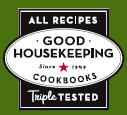
The Good Housekeeping Cookbook Seal guarantees that the recipes in this cookbook meet the strict standards of the Good Housekeeping Research Institute. The Institute has been a source of reliable information and a consumer advocate since 1900, and established its seal of approval in 1909. Every recipe has been triple-tested for ease, reliability, and great taste. Published by Hearst Books
A division of Sterling Publishing Co., Inc.
387 Park Avenue South, New York, NY 10016 Good Housekeeping is a registered trademark of Hearst Communications, Inc. www.goodhousekeeping.com For information about custom editions, special sales, premium and corporate purchases, please contact Sterling Special Sales Department at 800-805-5489 or specialsales@sterlingpublishing.com. Distributed in Canada by Sterling Publishing
c/o Canadian Manda Group, 165 Dufferin Street Toronto, Ontario, Canada M6K 3H6 Distributed in Australia by Capricorn Link (Australia) Pty.
Ltd.
P.O. Box 704, Windsor, NSW 2756 Australia Sterling ISBN 978-1-58816-875-7
Sterling ISBN 13: 978-1-58816-849-8 Copyright 2011 by Hearst Communications, Inc. All rights reserved. The recipes and photographs in this volume are intended for the personal use of the reader and may be reproduced for that purpose only. Any other use, especially commercial use, is forbidden under law without the written permission of the copyright holder. GOOD HOUSEKEEPING
Rosemary Ellis
EDITOR IN CHIEF Sara Lyle
LIFESTYLE EDITOR Susan Westmoreland
FOOD DIRECTOR Samantha B.
Cassetty, M.S., R.D.
NUTRITION DIRECTOR Sharon Franke
FOOD APPLIANCES DIRECTORBOOK DESIGN by Memo Productions
EDITED by Sarah Scheffel
Library of Congress
Cataloging-in-Publication Data
Good Housekeeping pasta! : our best recipes from fettuccine alfredo & pasta primavera to sesame noodles & baked ziti / Rosemary Ellis, editor in chief ; Susan Westmoreland, food director.
p. cm.
Includes index.
ISBN 978-1-58816-875-7
1. Cooking (Pasta) I. Westmoreland, Susan. II. Good Housekeeping Institute (New York, N.Y.) III.
Title: Pasta!
TX809.M17G66 2011
641.822--dc22
2010028166 10 9 8 7 6 5 4 3 2 1 CONTENTS 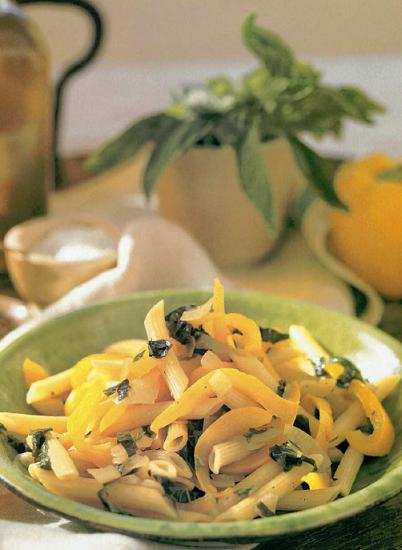
 Welcome to Good Housekeepings collection of favorite pasta recipes. Weve gathered the tried-and-true recipes that our editors and readers tell us they make again and again. Youll find dozens of sauces that can be prepared while the pasta water boilsjust right for those who, like many cooks, rely on serving pasta a few nights a week. Whether youre shopping the express lane of the grocery store or finding inspiration at your local farmers market, there are recipes to suit. If you like to keep dinner in the freezer, whip up our Big-Batch Tomato Sauceyou can stir in everything from store-bought meatballs to fresh shrimp or clams and deliver dinner in a flash. Having a crowd over? No problem.
Welcome to Good Housekeepings collection of favorite pasta recipes. Weve gathered the tried-and-true recipes that our editors and readers tell us they make again and again. Youll find dozens of sauces that can be prepared while the pasta water boilsjust right for those who, like many cooks, rely on serving pasta a few nights a week. Whether youre shopping the express lane of the grocery store or finding inspiration at your local farmers market, there are recipes to suit. If you like to keep dinner in the freezer, whip up our Big-Batch Tomato Sauceyou can stir in everything from store-bought meatballs to fresh shrimp or clams and deliver dinner in a flash. Having a crowd over? No problem.
Check out our baked pasta chapter, where youll find Sunday Baked Ziti and Meatball Casserole, Spaghetti Carbonara Pie, Butternut-Squash Lasagna, and more great crowd-pleasers. Another pasta plus is versatility. You toss it with greens and tuna to make a sublime Provenal Pasta Saladperfect for a picnic supper or light dinner. Combined with cheese, pasta makes a delicious, proteinrich meatless meal. Even meat eaters will love our Butternut-Squash Lasagna, with its cheesy layers of roasted squash. For special occasions youll find an array of impressive dishes to choose from, like our luscious Seafood-Stuffed Shells and Mint.
For everyday family meals, we offer our creamiest ever Macaroni and Cheese Deluxe, Linguine with White Clam Sauce, and Spaghetti and Meatballs, plus lots of quick and easy stovetop pastas starring fresh seasonal vegetables. Each and every one of the recipes has been triple tested in the Good Housekeeping kitchens to ensure superb results. Many of the recipes are classic Italian, while others are inspired by the cuisines of China, Vietnam, Greece, and France. Just be assured that one common thread runs throughout all of our very best pasta recipesgreat taste.
SUSAN WESTMORELAND
Food Director, Good Housekeeping Perfectly cooked pasta is firm yet tender to the bite, or al dente as Italians say, with sauce coating each delicious mouthful. Some of the most common mistakesmushy (or sticky) spaghetti, watery lasagna, sauce that pools in the bottom of the bowl instead of clinging to the noodles as it shouldcan easily be avoided by following a few simple guidelines: For best taste and texture, look for pasta, either Italian or American, made from durum wheat or semolina flour. Choose pasta packaged in cardboard boxes and resist the urge to transfer it from the original box to a clear decorative container.
The cardboard keeps out light, which can destroy riboflavin, an important nutrient that is found in pasta. Store dried pasta in a cool, dark place. Regular durum wheat pasta should last for up to a year. Whole-wheat pasta has a shorter shelf life: no longer than six months and sometimes less. Read package instructions to be sure. Fresh pasta should be refrigerated according to package directions, usually for up to a week. It can also be frozen for as long as a month.
Its best not to thaw frozen pasta before cooking. Use plenty of boiling water. A good rule of thumb is 4 quarts for each pound of pasta. Bring it to a rolling boil (covering the pot hastens the process), then add about 2 teaspoons of salt per pound of pasta. Salted water takes longer to boil, so be sure to add the salt just before adding the pasta. Dont be tempted to omit the saltits essential for proper seasoning. Stir frequently to prevent sticking. Once youve salted the water and its at a full boil, stir in the pasta.
Cover the pot, if necessary, to return the water quickly to a boil. Uncover and continue cooking, stirring often, until the strands separate. Theres no need to add oil to pasta cooking water. In fact, the oil might keep the sauce from adhering to the pasta. Stirring is all you need to prevent sticking. Cook according to package directions. Theres no set rule for how long each pasta shape should cook.
Spaghetti from one manufacturer may take longer than the same size spaghetti from another, depending on the type of wheat used and how it was processed. So always read the boxit will give you the correct cooking time. Check for doneness often before the suggested cooking time has elapsed. The goal is pasta thats tender yet still slightly firm, or al dente. The only way to test it is by tasting. Remove a piece from the pot and rinse it briefly under warm water, then bite into it.


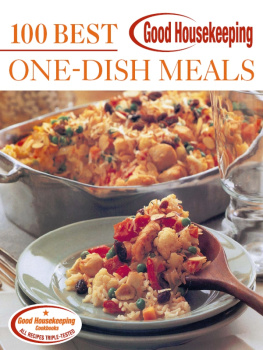
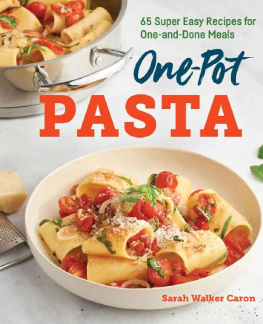
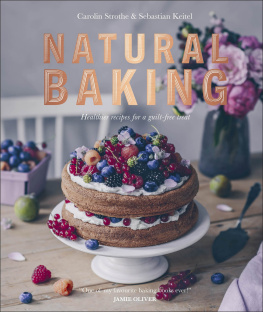
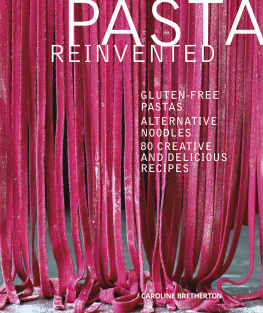

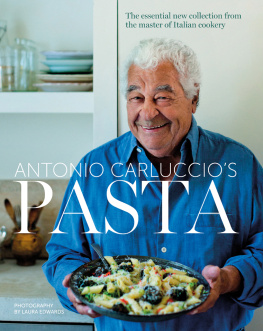
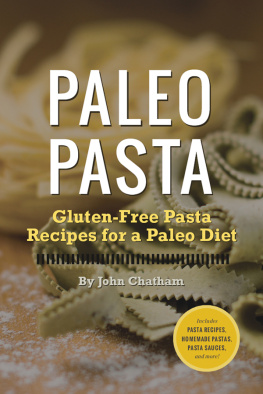
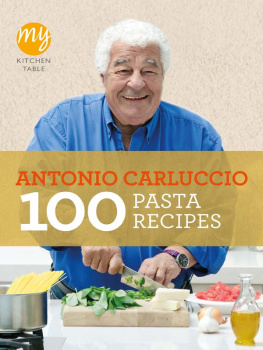
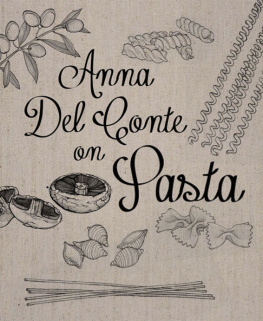



 The Good Housekeeping Cookbook Seal guarantees that the recipes in this cookbook meet the strict standards of the Good Housekeeping Research Institute. The Institute has been a source of reliable information and a consumer advocate since 1900, and established its seal of approval in 1909. Every recipe has been triple-tested for ease, reliability, and great taste. Published by Hearst Books
The Good Housekeeping Cookbook Seal guarantees that the recipes in this cookbook meet the strict standards of the Good Housekeeping Research Institute. The Institute has been a source of reliable information and a consumer advocate since 1900, and established its seal of approval in 1909. Every recipe has been triple-tested for ease, reliability, and great taste. Published by Hearst Books
 Welcome to Good Housekeepings collection of favorite pasta recipes. Weve gathered the tried-and-true recipes that our editors and readers tell us they make again and again. Youll find dozens of sauces that can be prepared while the pasta water boilsjust right for those who, like many cooks, rely on serving pasta a few nights a week. Whether youre shopping the express lane of the grocery store or finding inspiration at your local farmers market, there are recipes to suit. If you like to keep dinner in the freezer, whip up our Big-Batch Tomato Sauceyou can stir in everything from store-bought meatballs to fresh shrimp or clams and deliver dinner in a flash. Having a crowd over? No problem.
Welcome to Good Housekeepings collection of favorite pasta recipes. Weve gathered the tried-and-true recipes that our editors and readers tell us they make again and again. Youll find dozens of sauces that can be prepared while the pasta water boilsjust right for those who, like many cooks, rely on serving pasta a few nights a week. Whether youre shopping the express lane of the grocery store or finding inspiration at your local farmers market, there are recipes to suit. If you like to keep dinner in the freezer, whip up our Big-Batch Tomato Sauceyou can stir in everything from store-bought meatballs to fresh shrimp or clams and deliver dinner in a flash. Having a crowd over? No problem.